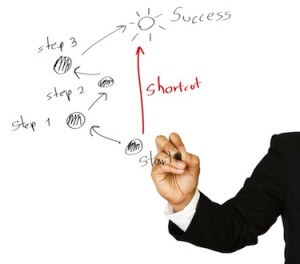 I wrote the Part 1 of this article last year and a lot of people was requesting me to write a step-by-step guide for planning and designing Minimum-Viable-Product (MVP). I also notice there are still some people who are confused on the concept of MVP. Some of the common misconceptions are, “MVP is the final product with some features taken out,” “MVP is a smaller or cheaper version of the final product.” To clarify once again, MVP is not about quickly putting together some interesting features over the weekend and release it, see what happens, and then see if you wish to proceed. MVP is all about validated learning. The goal of building MVP is validated learning about your product-market fit.
I wrote the Part 1 of this article last year and a lot of people was requesting me to write a step-by-step guide for planning and designing Minimum-Viable-Product (MVP). I also notice there are still some people who are confused on the concept of MVP. Some of the common misconceptions are, “MVP is the final product with some features taken out,” “MVP is a smaller or cheaper version of the final product.” To clarify once again, MVP is not about quickly putting together some interesting features over the weekend and release it, see what happens, and then see if you wish to proceed. MVP is all about validated learning. The goal of building MVP is validated learning about your product-market fit.
Step 1: Form your hypothesis
Since the aim is validated learning, therefore the first step is to determine what you wish to learn in finding your product-market fit. This should not be asking vague question like, “Does anyone want this thing I built?” But it should be more specific to learn about whether specific customer segment want a specific value proposition you are offering. Thus, your hypothesis should be the answers you know (or assume) to some of these questions below,
- Who is that person?
- Why do they need it?
- How can you find that person?
- How many of them are there?
- How much are they willing to pay for it?
- What would they be if without it?
Step 2: Determine metrics to test your hypothesis
I admit the that word “product” in MVP is a bit misleading. Tristan Kromer prefer to call it Minimum-Viable-Test, which I find it to be more correct, since it is really a test or experiment. As with scientists, after they form their hypothesis, before running their experiment, they will come out with quantitative and qualitative methods to measure the results. For each hypothesis that you established earlier, you will need to define a quantifiable metrics to make it an objective pass / fail test. Here are some examples:
- 10% of property investors who sign up will subscribe to the premium services at $5 per month.
- 80% of the housewives who participate in the group buying of Product X will share on Facebook via the link provided.
- 60% of the visitors who view the landing page will sign up for the free package.
Try to avoid vague and meaningless metrics such as below:
- Get 1,000 sign ups in a week. (How do we learn if a specific value proposition work for a particular customer segment?)
- Featured in XYZ Tech News. (Do we learn anything here about our customers?)
As a rule of thumb, you should either target your marketing to a specific customer segment, or you qualify them through your communication, i.e. headlines, messages, copy text, etc..
If you find certain hypothesis that you can’t quite measure, you probably need to go back and tweak your hypothesis so that it can actually be tested.
Step 3: Find answers to your tests
In this stage, you should look for ways to “build” your MVP and get the answers to your tests using minimum time and effort. If possible, try to avoid building (coding) anything unless there is really no choice. Here are the best to worst choices of MVP (excerpted from Lean on DC):
- Have a phone conversation.
- Show a PDF mockup and get answers.
- Fake the product or service just enough to get your answer (sign-up page with price, ad tests).
- Cobble together the product from existing stuff (or services).
- Create a “prototype” of the product.
- Create a decently functioning version of the product.
Case Study: MVP is not a cheaper product, it’s about smart learning
This is quoted from an article by Steve Blank, “An MVP Is Not A Cheaper Product, It’s About Smart Learning.” I like the case study in his article as it clearly illustrates the importance of savvy and good planning to achieve your MVP goals. I will share the key points of the case study here as my conclusion.
- A small start-up at Stanford have an idea to fly a drone (an aircraft without a human pilot on board) with a special camera over farm fields to collect images.
- The images would be able to tell farmers how healthy their plants were, whether there were diseases or bugs, whether there was enough fertilizer, and enough water.
- This will allow the farmers to make better forecasts of how much is their production, whether there are potential areas for pests, and where are the areas that need to put fertilizer and water.
- At the end, this will help farmers to increase their yields, and reduce their costs by optimizing the usage of water and fertilizer / chemicals.
- The team had interviewed the farmers, and validated the problem, i.e. the farmers acknowledged that the inability to see what was going on in detail on their fields was a problem.
- The team believe this is a real business, and they started raising money to build a prototype MVP. Their hypothesis is to find a farmer who would pay for the data.
- They decided that the MVP need to demonstrate 3 core features: (1) Demonstrate a drone flight, (2) Make sure their software could stitch together all the images of a field, and (3) Present the data to the farmer in a way he could use it.
- They concluded that the minimum cost to build their MVP was: (1) Buying a drone, (2) Buying the specialized camera, (3) Buying the software for image processing, (4) Hiring engineers to integrate all the pieces together.
- Though there is nothing technically wrong about this approach in terms of reaching their MVP goals. But Steve pointed that if they put more thoughts on the process of getting to the goals, they would have find a faster and cheaper way to build their MVP.
- Since the teams’ hypothesis was that they could deliver actionable data that farmers would pay for. At the end of the day, the farmer couldn’t care less whether the data came from satellites, airplanes, drones, or magic as long as they had timely information.
- This means that their plan to buy a drone, a camera, software, and hire engineers were a waste of time and resources. (Their hypothesis is not about testing the technical feasibility, but whether farmers cared about the data.)
- When Steve suggested to them, “Would it be cheaper to rent a camera and plane or helicopter, and fly over the farmers field, hand process the data and see if that’s the information farmers would pay for? Couldn’t you do that in a day or two, for a tenth of the money you’re looking for?”
- The team laughed and said, “We’re engineers and we wanted to test all the cool technology, but you want us to test whether we first have a product that customers care about and whether it’s a business. We can do that.”
I was wondering if the team’s response sounds familiar to you. 🙂
Tips: If you are planning to build your own startup or develop a new product, you can try out the Startup Checklist Test. It will show you whether you have covered all the vital steps before you venture further, which includes whether you have a good MVP strategy.


